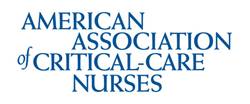Newswise — The addition of a certified wound and skin care nurse to a multiprofessional prone-positioning team at Penn Medicine Princeton Health significantly reduced the odds of patients with COVID-19 developing pressure injuries, according to a study published in American Journal of Critical Care.
The development of healthcare-associated pressure injuries is a significant complication of placing patients prone, and prolonged prone positioning for patients with acute respiratory distress syndrome (ARDS) is associated with higher rates of new pressure injuries, specifically on the face, cheekbones and thorax and over bony prominences.
Although many studies have reported the development of pressure injuries in patients with ARDS who are placed prone for prolonged periods, “Pressure Injury Outcomes of a Prone-Positioning Protocol in Patients with COVID and ARDS” is one of the first to explore specific treatment-related strategies for preventing pressure injuries.
The study evaluated the effectiveness of a multiprofessional pronation team that included a certified wound and skin care nurse who focused on reducing the development of pressure injuries in patients with COVID-19 and ARDS. The certified wound and skin care nurse had direct supervision and oversight of all skin preparation procedures and trained the team to care for the patients’ skin.
Senior author and researcher Kari A. Mastro, PhD, RN, NEA-BC, is director of practice, innovation and research, Penn Medicine Princeton Health, Plainsboro, New Jersey.
“Throughout the pandemic, we’ve been honing our efforts to improve outcomes for patients with COVID-19,” she said. “The results of our study underscore the value of having clinicians with specialized expertise work together to improve patient outcomes and could redefine the strategies used to prevent pressure injuries in this patient population.”
During the COVID-19 pandemic, Princeton Health formed a multiprofessional team to ensure the safe transition of critically ill patients from supine to prone and avoid common complications such as pressure injury development, accidental extubations and loss of intravenous catheters.
Before placing a patient prone, the team worked through different techniques and created a refined, systematic and smooth process, with step-by-step visual aids.
The research team evaluated retrospective data from the health system’s electronic health record for a seven-month period, Feb. 1, 2020, to Aug. 30, 2020. The intervention group was treated by a team that included a certified wound and skin care nurse, while the comparison group was treated by a prone-positioning team that used the National Pressure Injury Advisory Panel’s prone guidelines but did not include a certified wound and skin care nurse leading the pressure injury prevention strategies.
A total of 130 patients met the inclusion criteria for the cross-sectional analysis, 40% of whom were in the intervention group.
Significantly fewer patients in the intervention group had pressure injuries develop (8% compared with 60% in the comparison group). Further analysis and adjustment for relevant factors revealed that patients in the intervention group had a 97% lower adjusted odds ratio of pressure injury developing than those in the comparison group.
Other characteristics analyzed in the study include patient demographics, and clinical characteristics, such as length of stay, number of days proned, the patient’s initial and last scores on the Braden Scale, and the use of a specialty surface or bed.
The article details skin care-related prevention, assessment and intervention strategies, as well as the step-by-step prone-positioning procedure and specific responsibilities of the various team members.
To access the article and full-text PDF, visit the AJCC website at www.ajcconline.org.
About the American Journal of Critical Care: The American Journal of Critical Care (AJCC), a bimonthly scientific journal published by the American Association of Critical-Care Nurses, provides leading-edge clinical research that focuses on evidence-based-practice applications. Established in 1992, the award-winning journal includes clinical and research studies, case reports, editorials and commentaries. AJCC enjoys a circulation of more than 130,000 acute and critical care nurses and can be accessed at www.ajcconline.org.
About the American Association of Critical-Care Nurses: For more than 50 years, the American Association of Critical-Care Nurses (AACN) has been dedicated to acute and critical care nursing excellence. The organization’s vision is to create a healthcare system driven by the needs of patients and their families in which acute and critical care nurses make their optimal contribution. AACN is the world’s largest specialty nursing organization, with more than 130,000 members and over 200 chapters in the United States.
American Association of Critical-Care Nurses, 27071 Aliso Creek Road, Aliso Viejo, CA 92656; 949-362-2000; www.aacn.org; facebook.com/aacnface; twitter.com/aacnme
Journal Link: American Journal of Critical Care, January 2022

